 Miao embroider Jiang Laoben. (WEI JUNWEN / FOR CHINA DAILY)
Miao embroider Jiang Laoben. (WEI JUNWEN / FOR CHINA DAILY)
The Guzang Festival, held every 13 years, connects Miao people to their roots — and draws in appreciative visitors, Chen Nan reports.
Jiang Laoben remembers fondly celebrating traditional ethnic Miao festivals as a girl in her home village. Of all the festivals, she enjoyed the Guzang Festival the most.
Born and raised in Baibei, Rongjiang county, Southwest China's Guizhou province, which is home to more than 2,000 Miao people, she is 60 years old now, but her early impressions of the festival are still vivid.
"What I loved most was watching people wearing traditional Miao clothes — especially the gorgeous bainiaoyi, or hundred-bird dress, which features many hand-embroidered birds — and the raising of long, narrow flags with batik patterns, which were so beautiful," recalls Jiang.
READ MORE: Customs worth celebrating
Unlike other festivals in China, which are usually held annually, the Guzang Festival, established by the Miao people to worship their ancestors, takes place every 13 years.
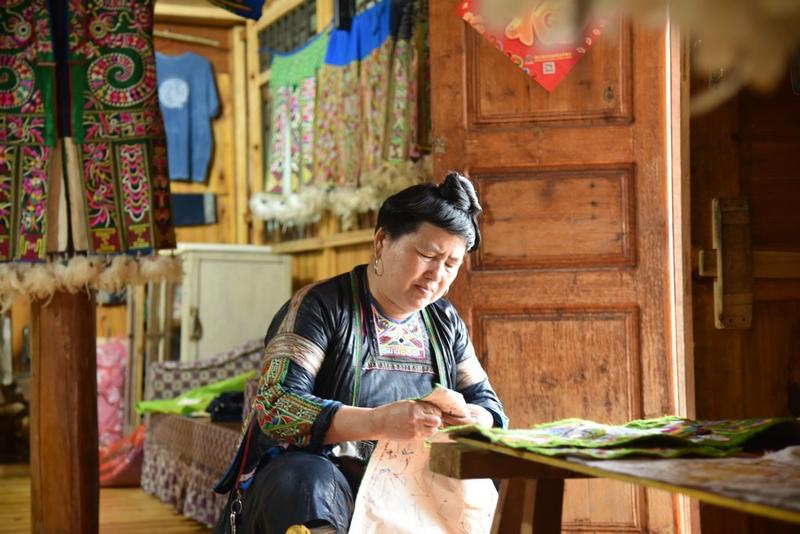 Miao embroider Jiang Laoben. (WEI JUNWEN / FOR CHINA DAILY)
Miao embroider Jiang Laoben. (WEI JUNWEN / FOR CHINA DAILY)
It's a multiday celebration, in which the Miao don traditional costumes and perform folk music and dance, set off firecrackers, host bullfighting competitions and sacrifice pigs and cattle.
The festival has become a major draw for tourists, who are eager for a glimpse of Miao life, and these traditional aspects of Miao culture that have survived and kept pace with China's contemporary metamorphosis. It was also among the first items to be listed as a national intangible cultural heritage in 2006.
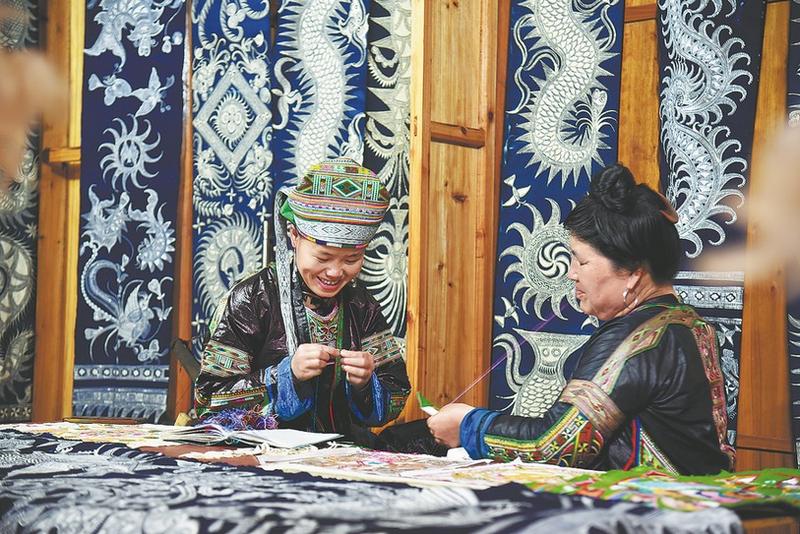 Jiang (right) is keen on passing on her expertise. (WEI JUNWEN / FOR CHINA DAILY)
Jiang (right) is keen on passing on her expertise. (WEI JUNWEN / FOR CHINA DAILY)
The festival was held between Dec 23 and 30. Thousands of Miao people from across the region gathered at Baibei village, one of the oldest villages in Guizhou, to witness the grand opening ceremonies.
Jiang was there to participate, making two bainiaoyi for young women in the village to wear at the celebrations. She started on them over a year ago; each is worth about 60,000 yuan ($8,890).
READ MORE: Wuxi builds on its heritage
The first time Jiang's dresses were showcased in the Guzang Festival was 37 years ago. Her apprenticeship in the art, however, dates from when she was 8 years old. At that time, she took embroidery lessons with her grandmother and aunt. She then graduated to making traditional Miao clothing, and at 15 years old, started on the bainiaoyi.
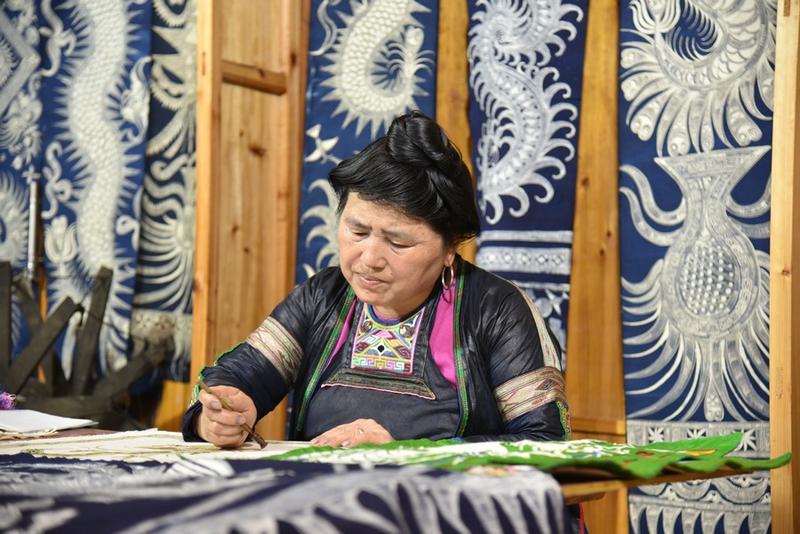 Miao embroider Jiang Laoben. (WEI JUNWEN / FOR CHINA DAILY)
Miao embroider Jiang Laoben. (WEI JUNWEN / FOR CHINA DAILY)
Making such a dress, the most famous example of Miao embroidery, requires intimate knowledge and intricate craftsmanship. A complete dress may be woven with hundreds of embroidered bird patterns, each a time-consuming creation.
Jiang is now transmitting her skills to future generations. She currently has more than 100 students, mostly young people from the village, who learn from her how to make the dress and other traditional Miao handicrafts, such as batik.
"It's a great honor to make bainiaoyi for the festival because it's a way of worshiping our ancestors. It's important to me that the traditions at the heart of the festival aren't lost," she says.
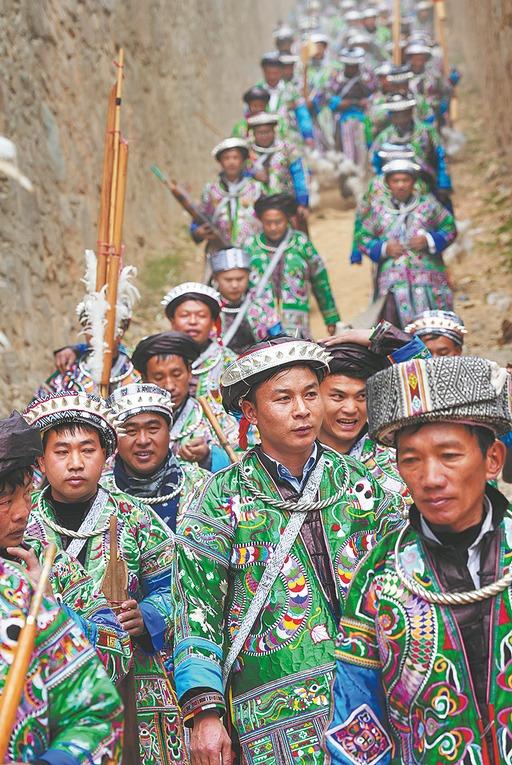 Traditional clothes worn for the festival. (WEI GUIJIN / FOR CHINA DAILY)
Traditional clothes worn for the festival. (WEI GUIJIN / FOR CHINA DAILY)
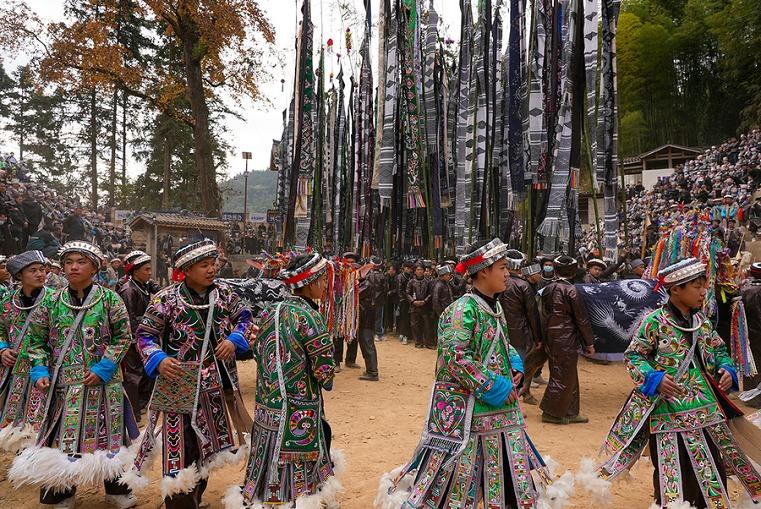 Traditional clothes worn for the festival. (WEI GUIJIN / FOR CHINA DAILY)
Traditional clothes worn for the festival. (WEI GUIJIN / FOR CHINA DAILY)
Miao songs indicate that the Guzang Festival was celebrated by early Miao people during the Xia Dynasty (c.21st century-16th century BC), which would make this festival thousands of years old.
According to the website of Guizhou's protection center for the intangible cultural heritage, the Guzang Festival reflects Miao social values, including ancestor worship, community harmony, hard work, austerity, peace and happiness, and is a valuable asset for the study of Miao history and culture.
ALSO READ: Tuning into tradition
The name of the festival derives from the two Chinese characters gu and zang, meaning "drum" and "to bury" respectively. Thus, "guzang" means "to bury the drum."
 Miao villagers in Baibei, Guizhou province, celebrate the Guzang Festival on Dec 24, 2022. (WEI GUIJIN / FOR CHINA DAILY)
Miao villagers in Baibei, Guizhou province, celebrate the Guzang Festival on Dec 24, 2022. (WEI GUIJIN / FOR CHINA DAILY)
Drums are a central feature of the festival. During the celebration, the Miao beat wooden drums made of maple trees to summon their ancestors' souls, which are believed to rest inside. Other ceremonial activities include xinggu (awakening the drum) and yinggu (welcoming the drum).
Music and dance play a vital part in the festival. One of the traditional instruments played is the lusheng, a reed-pipe flute. Festival goers form a circle around a drum, accompanied by men playing the lusheng, and as more and more people join in, a huge throng of dancers will form.
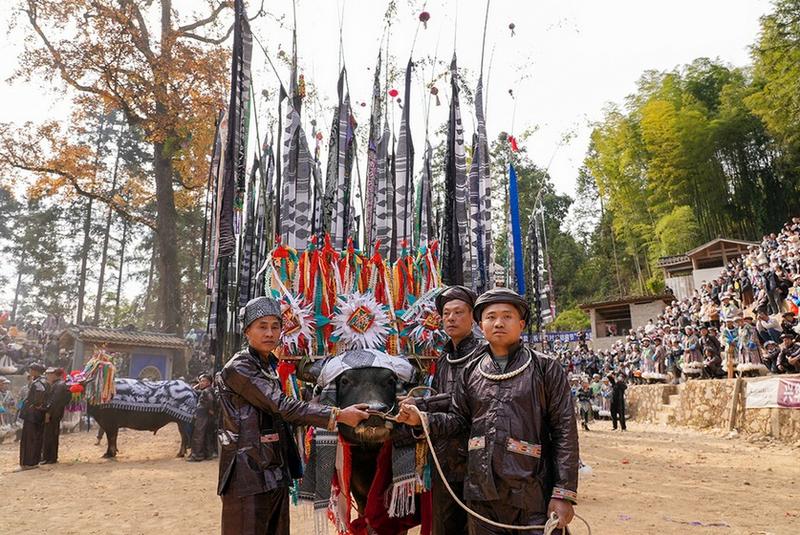 Miao villagers in Baibei, Guizhou province, celebrate the Guzang Festival on Dec 24, 2022. (WEI GUIJIN / FOR CHINA DAILY)
Miao villagers in Baibei, Guizhou province, celebrate the Guzang Festival on Dec 24, 2022. (WEI GUIJIN / FOR CHINA DAILY)
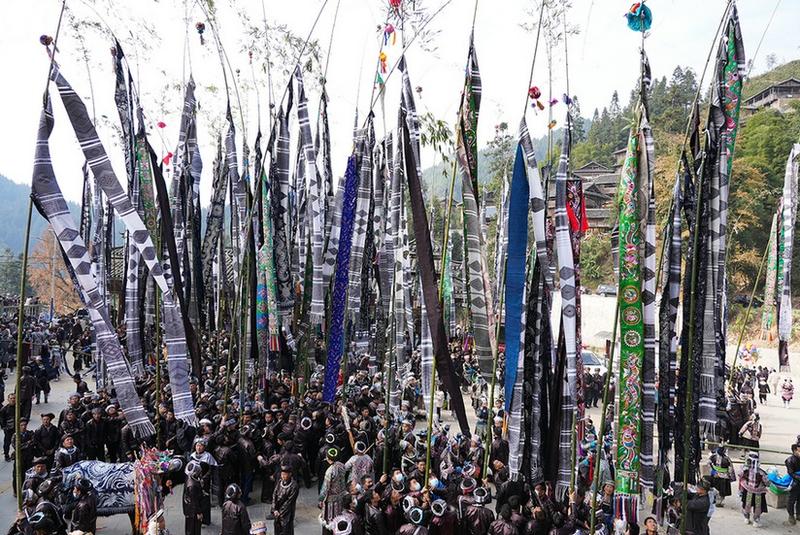 Miao villagers in Baibei, Guizhou province, celebrate the Guzang Festival on Dec 24, 2022. (WEI GUIJIN / FOR CHINA DAILY)
Miao villagers in Baibei, Guizhou province, celebrate the Guzang Festival on Dec 24, 2022. (WEI GUIJIN / FOR CHINA DAILY)
The festival is also an opportunity for the young and single to find love. If a man fancies a woman, he serenades her with the lusheng. If the man is in luck, the woman takes a flower belt and hangs it on his lusheng, signifying her reciprocation.
Luo Laojin, 47, is a member of the Baibei village lusheng troupe, which performed at last year's festivities. His first memory of the Guzang Festival is from his childhood, which inspired him to be trained to take part.
ALSO READ: Tasty tradition is sweet success for culture
"While I was watching the performers playing, I wanted to become one of them. The instrument is loud and appears at every ceremonial activity of the festival," says Luo, who started to learn the lusheng from other villagers at 13 years old.
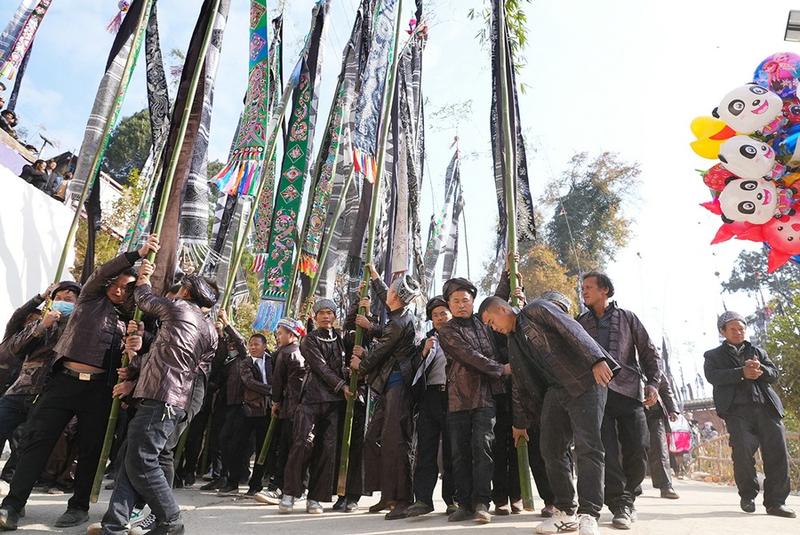 Miao villagers in Baibei, Guizhou province, celebrate the Guzang Festival on Dec 24, 2022. (WEI GUIJIN / FOR CHINA DAILY)
Miao villagers in Baibei, Guizhou province, celebrate the Guzang Festival on Dec 24, 2022. (WEI GUIJIN / FOR CHINA DAILY)
"Now we have over 10 people playing the lusheng in the troupe, mostly young people. We usually play over 20 songs during the festival as well as dance to the music," he adds."Miao people believe that music and dance are ways of communicating with their ancestors."
Luo notes that like many other traditional festivals in China, the Guzang Festival is about togetherness, and provides opportunities for people who leave their hometown and work and live elsewhere to return and come together.
Zhao Yandi in Guiyang contributed to this story.
Contact the writer at chennan@chinadaily.com.cn


